Table of Contents
The Enigmatic Classic Revisited
The 1957 Saab 93B emerges once again onto the classic car market, bringing with it a history as colorful and detailed as its vibrant red exterior. This Swedish classic, known for its elegant and characterful design, has traversed through decades, carrying stories from each of its custodians. Its journey now leads us to a private sale in Haarlemmermeer, Netherlands, where it stands as a testament to automotive history and restoration artistry.
A Closer Look at the 1957 Saab 93B
With an indicated mileage of just 1,813 Kms, this Saab 93B boasts an upgraded 850cc three-cylinder two-stroke engine under its hood, delivering approximately 45hp to the front wheels. This power is smoothly managed by an upgraded four-speed manual transmission, a notable enhancement from its original configuration.
This particular model, having been first registered in April 1957, holds the distinction of being an original Netherlands-delivered vehicle. It has enjoyed over 50 years within a single family before passing on to its third owner, who has now had it for five years.
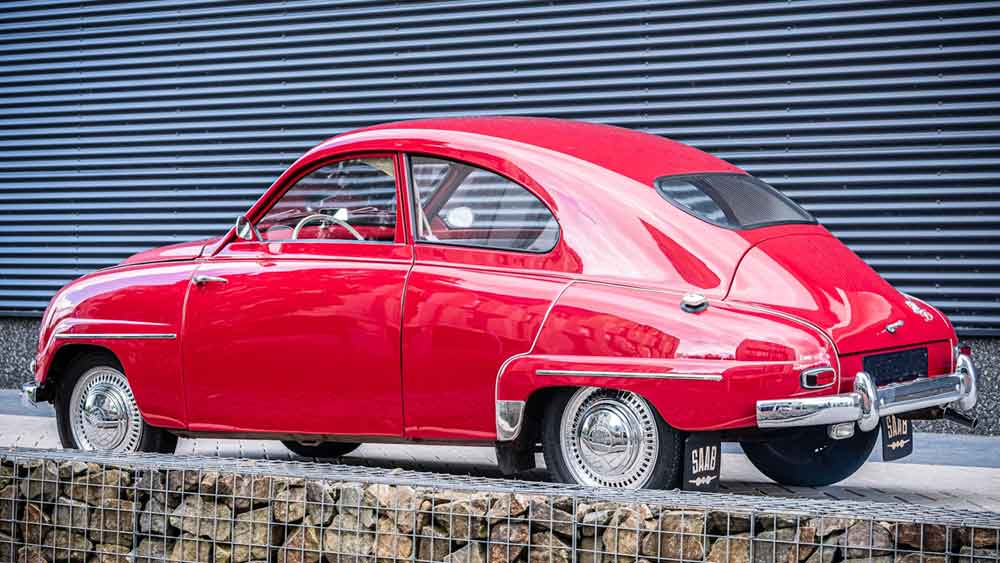
Innovations and Upgrades
The 93B model introduced several innovations in 1957, notably replacing the original two-piece windscreen with a single-piece unit and becoming the first production vehicle to offer two-point seat belts as standard.
This specific example dazzles in red, complemented by a red vinyl and white cloth-trimmed interior, chrome accents, and 15-inch steel wheels with chrome hubcaps. Not only has it been upgraded with a more potent engine and a four-speed manual gearbox, but it also features a 12-volt electrical system, enhancing its usability and reliability.
Discrepancies and Debates Among Aficionados
While the 1957 Saab 93B captivates with its storied past and vibrant aesthetics, a deeper dive into its details reveals a layer of intrigue and debate among Saab aficionados. Enthusiasts from the “Saab Classics” forum have brought to light several discrepancies that add to the car’s mystique. Among these, the listing’s mention of 12-volt electrics as an upgrade has been flagged as incorrect. This has stirred conversations, given that such an upgrade, while practical, deviates from the original specifications, thereby influencing the car’s authenticity and potentially its value.
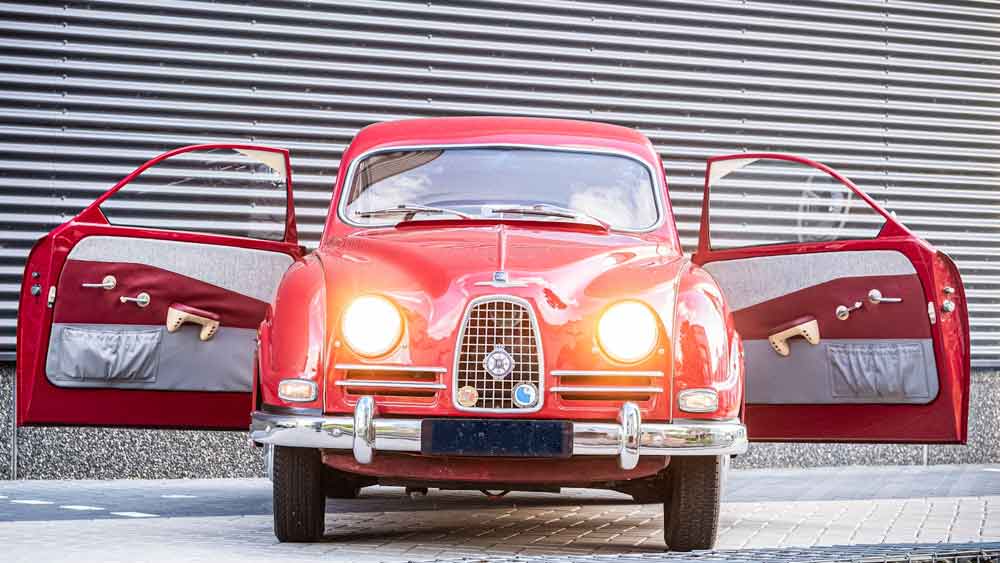
Further scrutiny reveals that the locking glove compartment, a feature present in this vehicle, traditionally did not appear until the 1959 models, thus raising questions about the car’s true lineage. This, coupled with the one-piece windscreen—a feature not expected until later models—suggests that this Saab could be an early pre-production model of 1958, blurring the lines between the model years and adding a layer of complexity for potential buyers and historians alike.
The subject of the car’s doors has also sparked discussions, with clarifications provided that the transition to front-hinged doors, as seen on the 1960 Saab 93F model, did not occur until after the 1959 summer holiday, marking a significant design evolution. This period marked a confusing time in Saab’s history, with overlapping model years and features, including the simultaneous production of the 1960 93F with front-hinged doors and the 1960 96 model with a new body design. Additionally, the introduction of the 95 station wagon during this era further complicates the narrative, showcasing a pivotal moment of innovation and transition within Saab’s lineup.
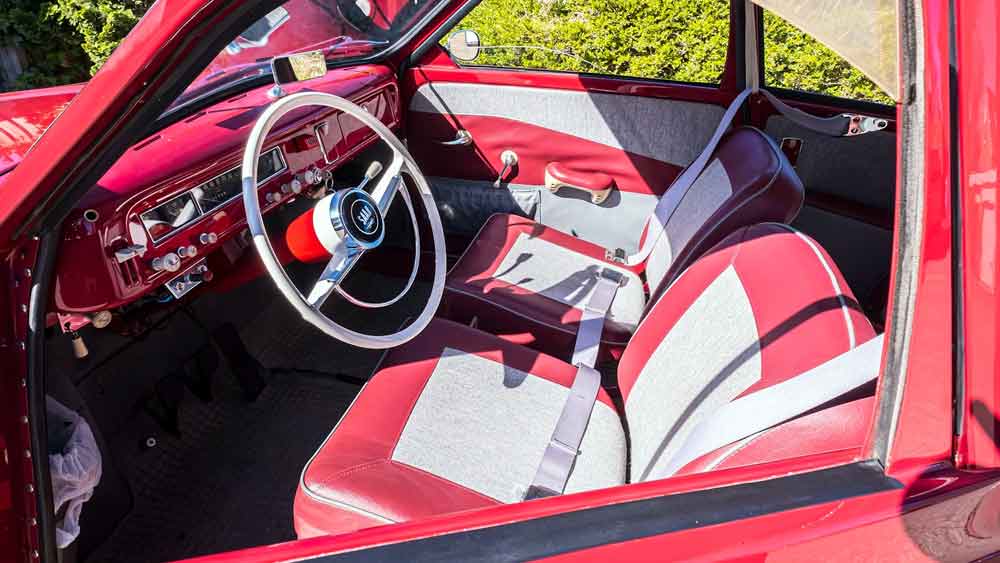
These details, while seemingly minor, underscore the importance of historical accuracy and thorough documentation when presenting a classic car for sale. Collectors and enthusiasts prize authenticity and clarity, particularly when considering vehicles of such historical significance.
The debate and discussion surrounding this 1957 Saab 93B not only enrich its story but also highlight the passionate community dedicated to preserving the legacy of these classic automobiles. As such, understanding and explaining the nuances of this Saab’s history become crucial in capturing the essence of what makes it a truly unique and valuable piece of automotive heritage.
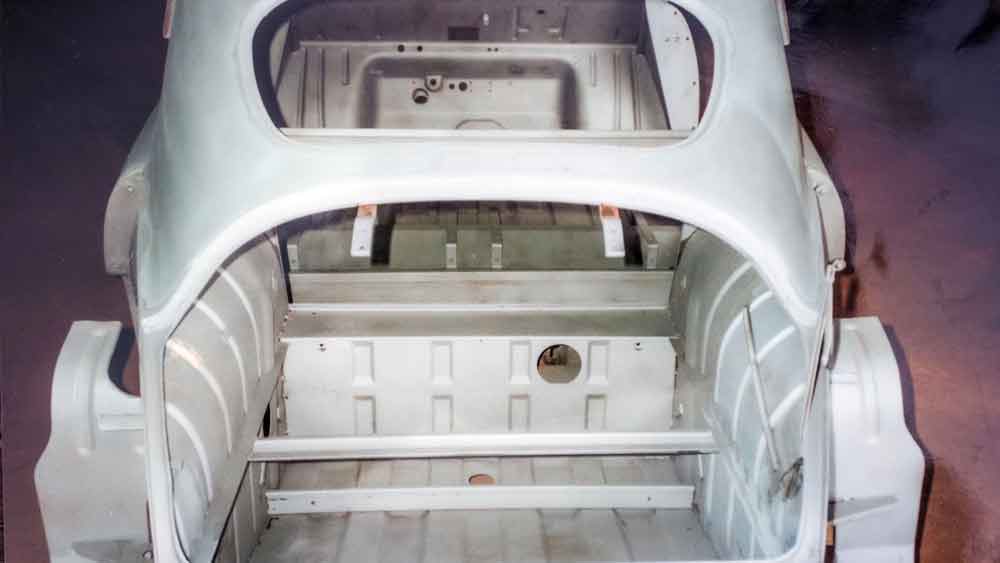
The Legacy Continues
This Saab 93B represents more than just a classic car; it embodies the evolution of automotive design and the passion of those who preserve such history. Its comprehensive restoration, carried out between 1993 and 1997, demonstrates the dedication to maintaining its splendor, ensuring that it remains a cherished piece for future generations. With its combination of original features and thoughtful upgrades, this Saab 93B offers a unique blend of historical authenticity and enhanced drivability.
Still in the Spotlight
Despite its auction on collectingcars.com concluding without a sale, this 1957 Saab 93B remains available for enthusiasts and collectors who appreciate its unique story and charm. Prospective buyers are encouraged to delve into the details, explore its history, and perhaps become a part of its continuing journey. The opportunity to own a piece of Saab’s illustrious past is still within reach through the auction site’s contact form, inviting another chapter to be written in the life of this remarkable classic.




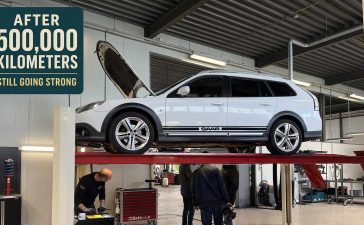





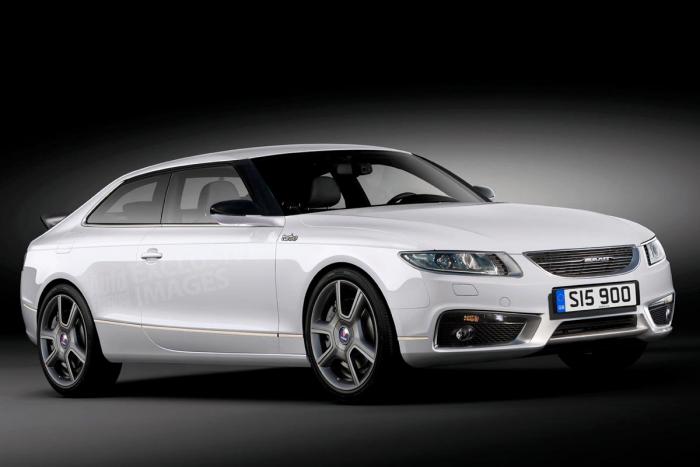
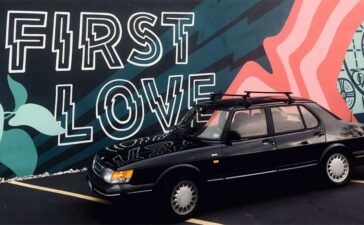
I miss the soud of it, the rasp of a two-stroke engine…😁😉🌞
I had one with the v4 engine shifter on the column free wheeling
min första “på taket” blev som sig bör i en sådan😁😉😁
My first car was a 69 v4 96, loved that car.
The whole windscreen came 1958, so it should be a -58 or -59
Had a 1965 MC 850 that I bought brand new – my first car. Drove it for 11 years.
The first engine I learned to rebuild
My first car was a 1959 SAAB GT. I later owned a Station wagon, a 99 and a SAAB Sonnet. All were special cars and gave me many wonderful hours of driving pleasure